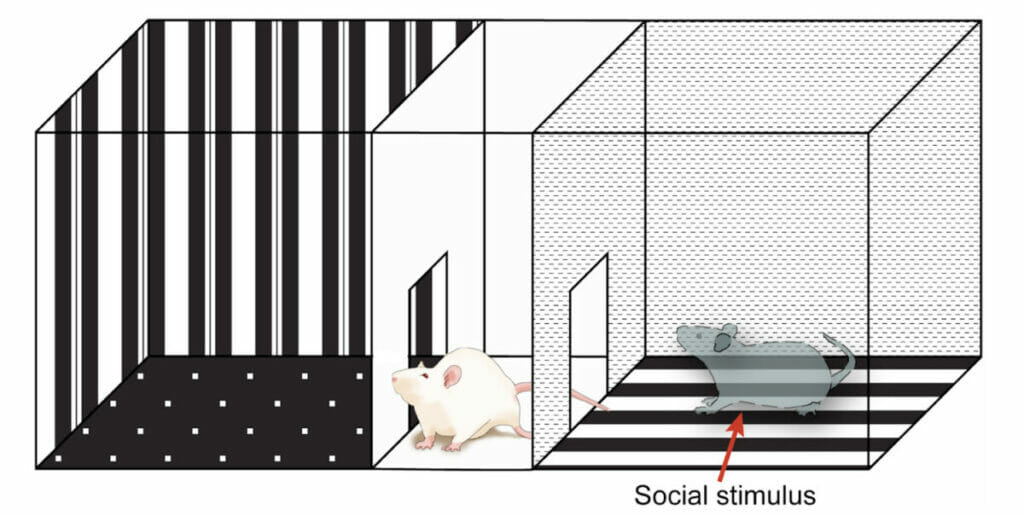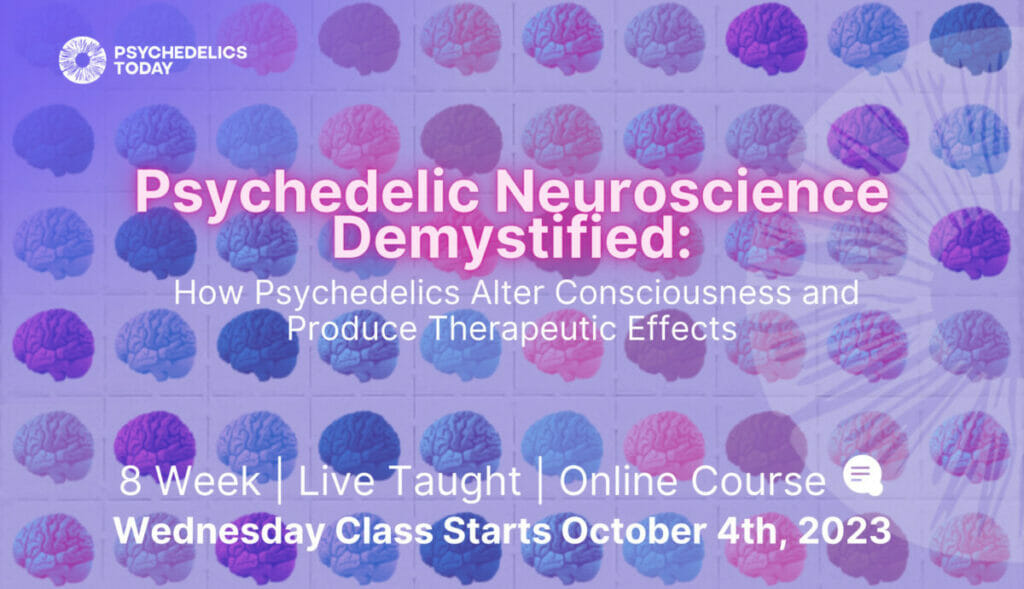Neuroplasticity, a term that has quickly become a buzzword in the psychedelic space and beyond, refers to the brain’s ability to reorganize itself by forming new neural connections or altering existing ones. Although it’s at its highest during early childhood, neuroplasticity persists throughout life and is central to our ability to learn from our experiences, adapt to new environments, and heal from our injuries.
Studies have consistently found that psychedelics significantly amplify neuroplasticity, thereby acting as potential catalysts for lasting changes in neural circuitry and behavior.
The neuroplasticity induced by psychedelics, which persists beyond the psychedelic experience itself, is thought to be central to the lasting positive benefits of psychedelic-assisted psychotherapy.
Recently, striking findings published in Nature have shed further light on the pro-plasticity effects of psychedelics. In brief, this study – led by Dr. Romain Nardou within the lab of Dr. Gul Dolen at Johns Hopkins University – revealed that psychedelics can re-open plasticity in certain parts of the brain in a manner that’s usually only possible in the first couple months after birth. In scientific terms, psychedelics were found to open the “social reward learning critical period”. This is a highly significant finding, with huge implications for the therapeutic mechanisms of psychedelics. Let’s dive into what this all really means.
What are Critical Periods?
In order to understand the significance of opening a critical period, we need to know what a critical period is. In a nutshell, a critical period is a window of time during the development of the brain where it’s extremely receptive to specific kinds of environmental stimuli. That is, it’s a period of time in which being exposed to certain stimuli is critical for proper brain development. The development of different functions in our brains – whether it’s vision, sense of touch, or our social tendencies – have different, but typically overlapping, critical periods. During a given critical period, experiences can have a lasting – and typically irreversible – impact on particular neural circuits and, consequently, certain aspects of our perception, thinking, and/or behavior.
Some notable examples come from the classical experiments conducted by the neuroscientists (and, later, Nobel laureates) David Hubel and Torsten Wiesel in the 1950s/60s on the development of the visual system in cats. In some ethically questionable experiments, they investigated how controlling the types of visual inputs a cat receives during early development impacts their vision perception throughout their lifetime. In particular, they raised newborn cats in a completely enclosed room where all they ever saw were vertical lines. Researchers found if this was done during a particular period of time (the critical period) the cats never developed the ability to see horizontal lines. These cats would consistently walk right into objects that featured horizontal surfaces, such as tables, and no amount of horizontal line exposure after the critical period allowed them to see horizontal lines. This illustrates how experiences that occur during a critical period early in development can lead to lasting changes in neural circuitry throughout the lifespan.
Critical Period Reopening with Psychedelics
In the Nature study with psychedelics, the researchers assessed a different kind of critical period, this time in rodents, pertaining to the ability to learn social rewards. This type of learning is assessed using the Social Conditioned Place Preference (SCPP) paradigm. SCPP is a way to measure a rodent’s natural preference for a location that has been previously associated with social interactions. In this paradigm, the rodent is placed in a cage that features two distinct rooms, and they are only exposed to social interactions with other rodent friends in one of the rooms. After this exposure, researchers put the rodent into the cage by itself and assess the proportion of time it chooses to spend in the room that they had social interactions in, relative to the one where they were always alone.

Social reward learning, therefore, refers to the extent to which an animal is able to learn to associate a specific environment with the rewarding aspects of social engagement. Interestingly, research has found that this ability is at its highest at around 20-50 days after birth in rodents, after which it steeply drops off and becomes negligible. In other words, there is a clear critical period during which positive social engagement is necessary for rodents to learn that social environments are desirable to seek out.
As you might be anticipating by now, the Nature study found that psychedelics – including the serotonergic psychedelics psilocybin and LSD, the atypical psychedelic ibogaine, and the quasi-psychedelics ketamine and MDMA – all have the capacity to reopen this social reward learning critical period in adult mice. In fact, they restored social reward learning to an extent that matched or went beyond the maximum that occurred during their critical period.
In addition, they intriguingly found that the duration of this reopening was proportional to the length of the drug’s acute subjective effects in humans. For instance, ketamine-induced reopening only lasted for 48 hours, while it was two and three weeks for psilocybin and LSD, respectively. Ibogaine-induced critical period reopening was found to last the longest, at four weeks. For the neuropharmacology nerds out there, this raises interesting questions on how the lasting neurobiological effects of these drugs may be fine-tuned based on their pharmacokinetic and pharmacodynamic properties. It also has clear implications for psychedelic psychotherapy and optimal integration practices – which we will get to in a moment. Before that, there’s one more finding from this study worth highlighting.
In particular, the researchers found that this critical period reopening was mediated by increases in a specific kind of neuroplasticity called ‘metaplasticity’. Metaplasticity refers to the general ability for the brain to neuroplastically mold itself – it’s essentially the “plasticity of plasticity”. It can be contrasted with “hyperplasticity”, which refers to the targeted changes in specific sets of connections between neurons (as opposed to a generalized increased ability to do so). The study specifically found that restoring oxytocin-mediated plasticity in the reward system of the brain – in a region called the nucleus accumbens – mediated the observed re-opening. What this suggests is that psychedelics may, in certain brain regions, remove the “brakes” on adult neuroplasticity, thereby inducing a neuroplastic state similar to early childhood. As such, during the psychedelic experience, and in the days and weeks immediately after, we may have a unique ability to make deep changes to our neural circuitry and tendencies in thought and action – to an extent that was not available since childhood.

Implications for Psychedelic-Assisted Psychotherapy
The ability of psychedelics to reopen social critical periods and induce metaplastic changes has profound implications for psychedelic-assisted psychotherapy. It provides a neurobiological framework that could help explain the long-lasting therapeutic effects observed in the treatment of disorders such as depression and PTSD. It highlights that re-learning positive social associations may be a core part of therapy – an idea consistent with recent work highlighting how the quality of the therapist-client relationship is a core mediator of positive outcomes. It also underscores the importance of community-embedment and the quality of one’s interpersonal relationships following a psychedelic journey.
Moreover, the finding of increased metaplasticity provides direct neurobiological support for the importance of psychotherapy and other interventions following a psychedelic journey. This is because metaplasticity might allow the brain to be more able to mold itself in response to such interventions. Strictly speaking though, this remains speculative, since we do not know whether these metaplastic changes extend beyond social reward learning specifically. However, we are very much in the early stages of this research and there is so much yet to be studied and discovered.
The ability of psychedelics to reopen social critical periods and induce metaplasticity offers a compelling avenue for future research and therapeutic applications. These findings could revolutionize our understanding of how psychedelics work at a neural level and how they can be effectively incorporated into psychotherapeutic frameworks. As we continue to decipher their intricate and multifaceted neurobiological mechanisms, the horizon looks promising for the application of psychedelics in treating a wide range of psychiatric disorders.



